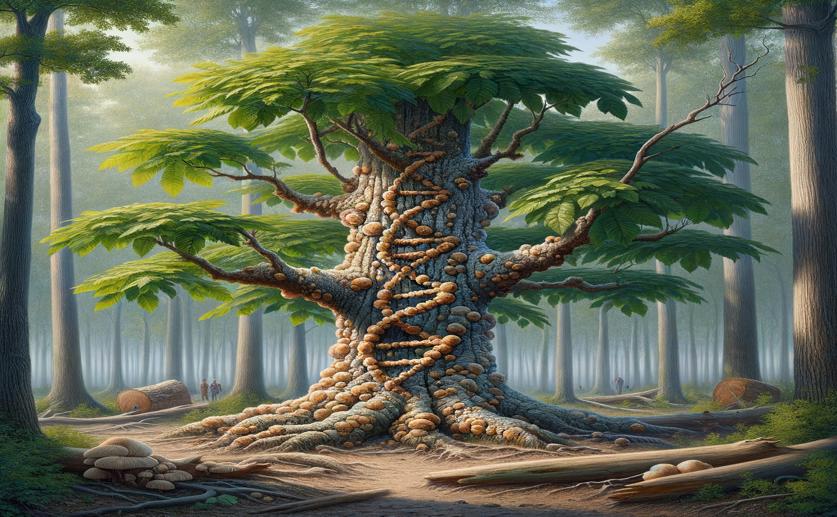
Unveiling the Genetics of a Fungal Threat to Hickory Trees
Greg Howard
8th March, 2024

Image Source: Natural Science News, 2024
Key Findings
- Researchers in Zhejiang, China, sequenced the genome of a fungus harming Chinese hickory trees
- They found 18 unique protein clusters in the fungus that may cause the tree disease
- A new method to alter the fungus's genes was developed, aiding future disease control
References
Main Study
1) High-quality genome assembly and genetic transformation system of Lasiodiplodia theobromae strain LTTK16-3, a fungal pathogen of Chinese hickory.
Published 5th March, 2024
https://doi.org/10.1128/spectrum.03311-23
Related Studies
2) Phenotypic and Genomic Difference among Four Botryosphaeria Pathogens in Chinese Hickory Trunk Canker.
3) Genome-wide identification and expression profiles of ABCB gene family in Chinese hickory (Carya cathayensis Sarg.) during grafting.
4) Diversity of Botryosphaeriaceae Species Associated with Chinese Hickory Tree (Carya cathayensis) Trunk Cankers.
5) Draft Genome Sequence Resource of the Citrus Stem-End Rot Fungal Pathogen Lasiodiplodia theobromae CITRA15.



 5th March, 2024 | Jenn Hoskins
5th March, 2024 | Jenn Hoskins